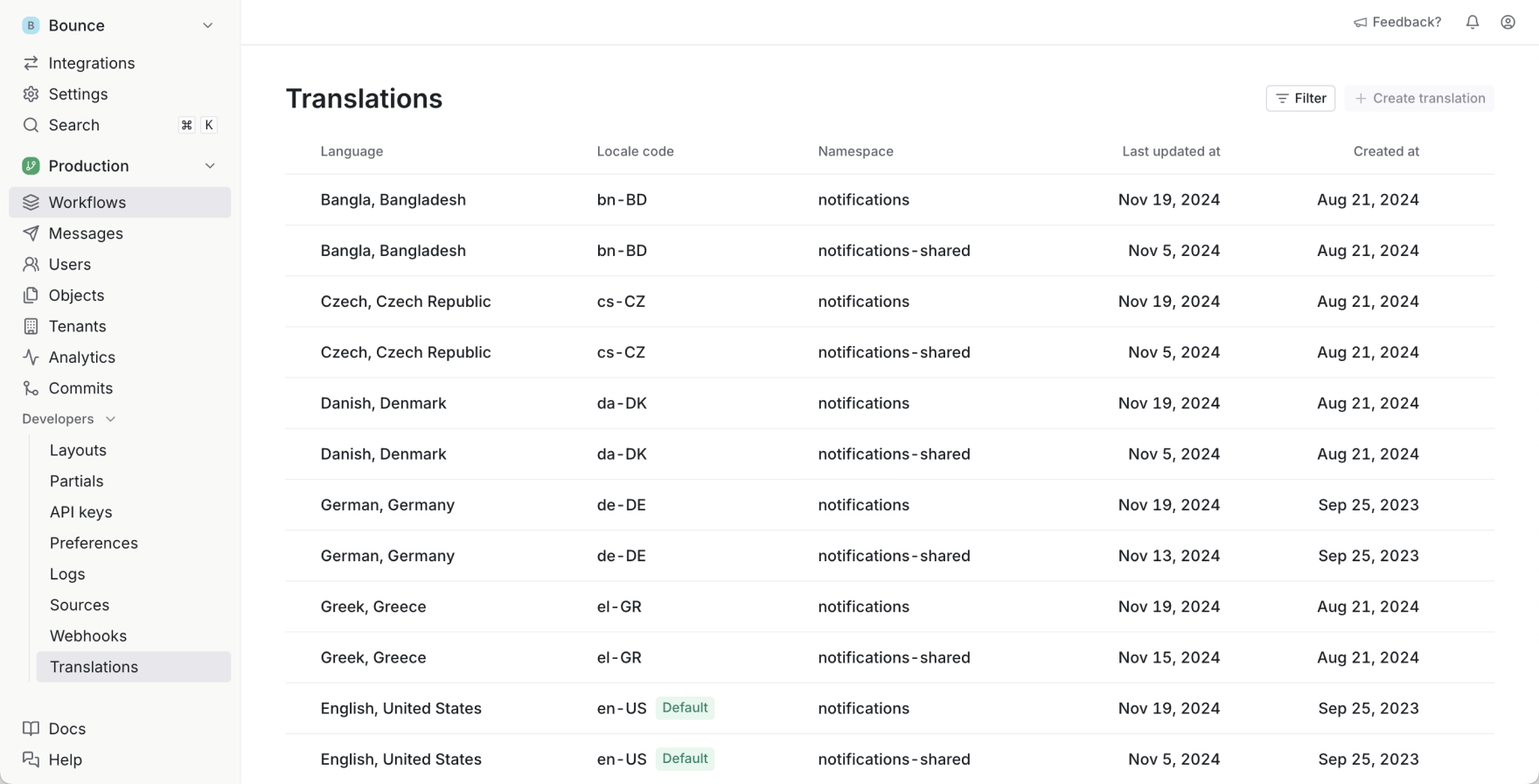Bounce powers the largest global luggage storage network, connecting millions of travelers with local businesses in 13,000 locations around the world. Bounce began as a prototype built in one hour and has grown into a sophisticated marketplace operating in more than 4,000 cities across 100 countries.
"We're building towards a customer expectation where you can find Bounce wherever you go and always have a place to drop your bags," explains Luís Jesus, Engineering Lead at Bounce. "But coordinating between travelers and storage partners at this scale brings unique notification challenges."
- Bounce grew to serve over 13,000 locations in over 100 countries with a lean engineering team of just 20 people
- Bounce rapidly added new notification channels to facilitate communication between travelers and storage partners
- Bounce used Knock to support localized communications across a global user base while maintaining engineering efficiency
- Bounce achieved 20x revenue growth since partnering with Knock, and has successfully raised a $19 million series B investment
The situation: scaling a global marketplace
Bounce's founding team rapidly engineered their proof of concept into a functioning product within a month. This rapid development approach set the tone for their engineering culture: move fast, stay lean, and focus on core business logic.
As they scaled, each luggage storage transaction required coordinating multiple touchpoints between travelers and storage partners - booking confirmations, check-in notifications, partner alerts, status updates, and more. Both travelers and partners needed real-time updates through their preferred channels. Supporting a global userbase in their native languages introduced additional challenges.
Before implementing Knock, Bounce managed their notification infrastructure through direct integrations with multiple providers. Their engineering team delivered notifications using Sendgrid for transactional email and Twilio for SMS.
As Bounce expanded across countries and added new features, each enhancement to their notification system demanded dedicated engineering resources. Without an orchestration layer for notification workflows or a centralized management system for templates, Bounce's notification program ballooned in complexity and became a blocker for product growth.
Engineering philosophy: offload complexity, stay nimble
"From the very beginning, one of our strategies has been to offload complexity to third parties. That's what allowed us to grow in revenue without growing the team."
This philosophy shapes their entire technology stack. Bounce uses Stripe and Braintree for payments, Render and Vercel for infrastructure, and Steep for analytics. Each choice reflects their preference for best-in-class solutions over building in-house.
Bounce evaluated several notification providers including Courier, Supersend, and Novu. While these services offered basic notification capabilities, none provided the developer experience and extensibility Bounce required.
The team chose Knock over the competition because it was the only notifications platform that offered automated translation management through its CLI, native CI/CD integration for notification workflows, and sophisticated multi-channel orchestration.
"The thing that drew me to Knock was the clear documentation," notes Jesus. "Looking at the documentation of a product, you can see if it's geared towards marketers or geared towards salespeople. In this case, Knock was very much geared towards developers."
How Bounce implemented Knock
Translations at scale

"With locations in more than 4,000 cities across 100 countries, you can imagine how many languages we have to support," explains Jesus. "Communication is a very big part of a marketplace and you need to reach customers and partners in the language they're most familiar with."
The engineering team built an automated translation pipeline that leverages both Knock's CLI and API. Here's how it works:
- Engineers write notification content in their codebase
- A CI pipeline extracts strings to JSON files
- Files are uploaded to Crowdin for translation
- Translated content returns via pull request
- Upon merge, Knock's CLI automatically updates notification templates

Workflow automation
Bounce wanted to maintain their notification templates and workflows as code, so they built a custom CLI tool on top of Knock's CLI that:
- Compiles MJML email templates into HTML
- Syncs notification workflows between their codebase and Knock
- Promotes changes through development environments
Analytics and optimization
Bounce uses Knock's Segment integration to measure notification effectiveness across channels. This integration helps them track open rates and engagement, comparing performance across different notification types and channels. These analytics inform their communication strategy, helping them optimize timing and channel selection for different types of messages.
"We use the Segment integration to see the ratio of open messages and compare it with the same messages we get with the open messages," Jesus explains. This data helps Bounce understand which channels work best for different types of communications.
The results: efficient, fast growth
Since implementing Knock in late 2022, Bounce has grown revenue 20x while maintaining a lean engineering team. By offloading notification infrastructure to Knock, their engineers focused on core marketplace features and international expansion. The decision aligned with their strategy of leveraging best-in-class services rather than building all applications in-house.

The engineering team automated notification workflows across email, SMS, push, and in-app channels without dedicating resources to maintaining that infrastructure. Their custom integration handles millions of notifications in multiple languages, supporting both customers and retail partners through a single platform.
"By choosing Knock, you're actually choosing a company for the future - more than a tech provider, you're choosing a partner for your business. If you have a team that's geared towards solving technical aspects of notifications implementation and reaching your customers and partners at the right time, Knock is definitely the choice."
For marketplace startups looking to scale globally while keeping engineering teams lean, Bounce's approach provides a clear blueprint. Companies should focus resources on core product development while partnering with specialized platforms like Knock to handle critical but complex infrastructure needs.